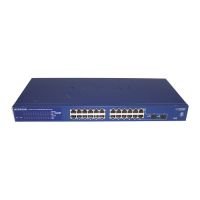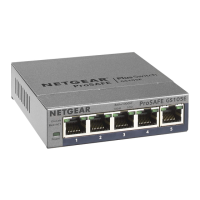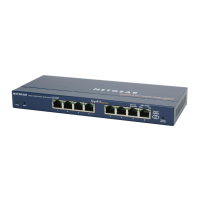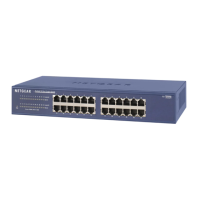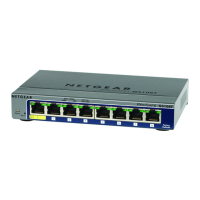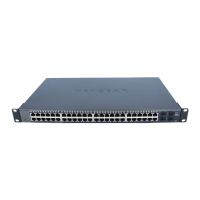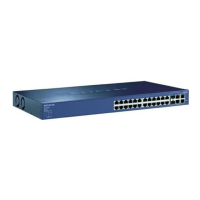• AutoSensing and autonegotiating capabilities for all ports.
• Auto Uplink technology is supported on all ports.
• Automatic address learning function to build the packet-forwarding information table.The table contains
up to 16K Media Access Control (MAC) addresses.
• Store-and-forward transmission to remove bad packets from the network.
• Full-duplex IEEE 802.3x pause frame flow control.
• Active flow control to minimize packet loss and frame drops.
• Half-duplex backpressure control.
• Per-port status LEDs and system status LEDs.
• Nonstop Forwarding Failover (NSF) support for the master in a stack.
• NETGEAR green power-saving features:
- Energy efficiency mode that fully conforms to the IEEE802.3az standard
- For 1GBASE-T ports, per-port automatic change to a lower power mode when the port link is down
• Support for Power over Ethernet (PoE+) on model M4300-28G-POE+ and model M4300-52G-POE+.
• Support for an APS1000W PSU to provide a larger power budget on model M4300-28G-POE+ and
model M4300-52G-POE+.
• Support for an external redundant power supply (RPS) on model M4300-52G-POE+.
About Stacking
A single switch can control and manage a stack.This switch is referred to as the stack master, or simply,
the master. Any other members in the stack are referred to as slaves. All switches in a stack are stack
members.
Slaves can download firmware from the master and the master can push firmware to the slaves.
The master runs the fully operational software of a switch. In addition, the master runs the master software
of the distributed switching application that configures and manages all slaves. Generally, the master operates
the remote slave’s low-level drivers through the distributed switching application part that is running in the
context of the slave.
During stacking setup, the switches autoselect one switch as the master. All other switches become slaves
and are assigned unique stack IDs. One of the slaves is designated as the backup master.The backup
master functions as a slave but can become the master if the original master fails. In the default configuration,
the master and backup master are assigned unit IDs of 1 and 2, respectively.You can use the web
management interface to configure different ID assignments.The master provides a single point of control
and management as well as a single interface through which to control and manage the stack.
Switch software is downloaded separately for each stack member. However, all stack members must be
running the same software version.
A stack unit can operate in one of the following modes:
Introduction
7
Managed Stackable Switch Series M4300
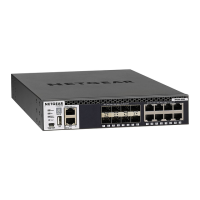
